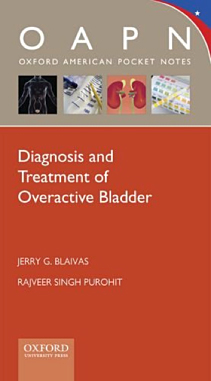Biofeedback and Clamps
What is Biofeedback for Male Incontinence?
Biofeedback is a series of progressive exercises patients are taught to strengthen their external sphincter. Patients are able to visualize the activity of different muscle groups though visual feedback (hence “biofeedback”) on a computer screen.
How does Biofeedback work?
Patients typically have EKG leads placed behind their scrotum near their rectum to monitor the pelvic floor. In addition, a small catheter is placed in the rectum to monitor abdominal pressures. Sessions typically last 1 hour and patients are taught techniques to strengthen their urinary sphincter. Usually patients undergo a regimen of 6 to 12 sessions. Outcomes are monitored with pad tests which measure the amount of urinary loss in 24 hours and voiding diaries.
How well does biofeedback work for male incontinence after prostatectomy?
For most patients it is unlikely to provide a definitive cure and be the difference between being wet and dry. However, for many patients it will decrease the amount of leakage and help speed up the process of recovery after prostate surgery induced incontinence.
What are other Temporizing measures for Incontinence?
The type of temporizing procedure depends to a large extent upon the your own preferences. For mild and moderate degrees of incontinence one of innumerable commercially available absorbent pads may be all that is necessary. If you choose this treatment, it is a good idea to try out a number of different kinds until you find one that best meets your needs. Some men are able to get by with just a thin mini-pad; others require adult diapers. Alternatively, you might try a penile clamp. There are several commercially available penile clamps for this purpose. A penile clamp is a device, usually made of plastic and sponge rubber, that is placed around the base of the penis and tightened just enough so that urinary leakage doesn’t occur. Obviously, you have to exercise great care to sure that you don’t put the clamp on so tightly that it damages your penis.
We’d never put the penile clamp on too tight!
While this is rarely a problem in men with normal sensation, if your sensation is diminished, for example, if you have some nerve damage from diabetes or a stroke or multiple sclerosis, you actually could cause damage and not even feel it. All you need to do is periodically check your penis to be sure that there is no swelling or redness. If this does occur, you should simply remove the clamp leave it off until the swelling and redness subside.
———
Why Choose a Uro Center Urologist in New York?
The urologists at the Uro Center in New York are experts in their field, bringing academic and research based innovation to the clinical forefront. Our urology team specializes in areas of treatment such as: robotic surgery, reconstructive urology, men’s health & infertility, kidney stones, urologic oncology, penile implant surgery, urethral stricture, BPH, Urinary incontinence treatment, Mesh complications, Enlarged prostate treatment, Urodynamics, vesicovaginal fistula and female incontinence in New York.
Request an Appointment











